Charger TrustFire TR-012
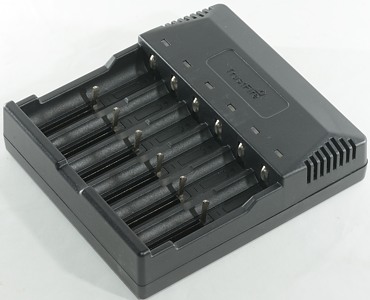

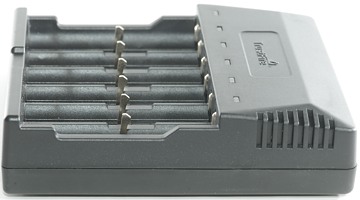
This charger can charge up to 6 LiIon and NiMH batteries at a time. Usual TrustFire products do not inspire much trust, lets see how this one does.
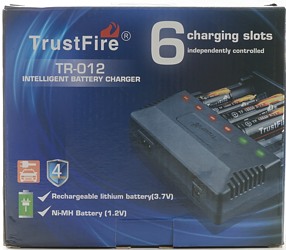
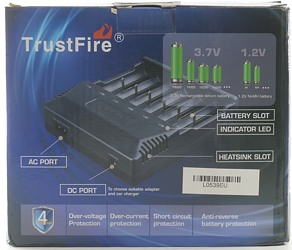


The charger comes in a retail box. There is some specification on the box.

The pack contained the charger, a mains led, a instruction sheet, a warrenty card and a QC note.

The power input is a DC barrel input and a mains input with universal voltage (110-220VAC 50/60Hz).

The user interface is 8 leds, red while charging, green at all other times.
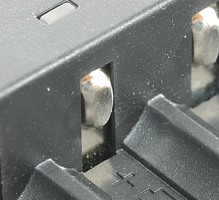
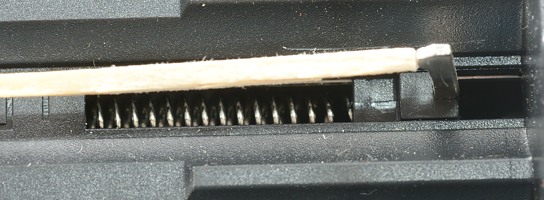
The battery slot are the slider construction, but with plastic sliders. It is very smooth and has a good grip on the batteries, except the shortest ones.
It handles batteries form 31 to 69mm, with some pressure it can handle up to 71mm batteries.


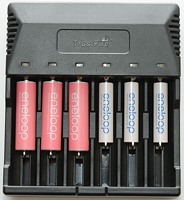

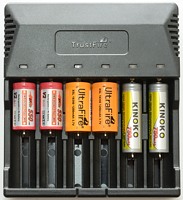
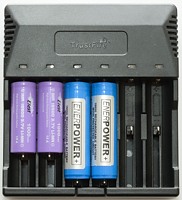
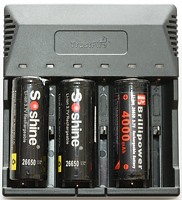
The current is a bit high for 16340 and 14500 LiIon batteries.
Measurements
- Power consumption when idle is 1.5 watt
- Between 0V and 0.5V charger will charge with 17mA.
- Between 0.5V and 1.4 volt the charge will use NiMH charging
- Between 1.4V and 2.0 volt the charge will charge with 17mA
- Above 2.0V the charger will use LiIon charging.
- When charging is finished the charger will charge the battery with about 1mA (Both LiIon and NiMH).
- When charger is without power it discharge the a LiIon with about 12uA and a NiMH with 6uA.
- If the battery voltage drops below 3.65V the charger will restart.
- Charge will restart charging after power loss, or battery insertion.
Charging LiIon
%20%231.png)
This is a simulated CC/CV charge, it starts very early reducing the current. The termination current is slightly high.
The final result of the charging looks good.
%20%232.png)
%20%233.png)
%20%234.png)
%20%235.png)
%20%236.png)
The other slots looks the same.
%20%231.png)
Because the "CV" phase is started very early, it takes long time to charge this cell.
%20%231.png)
The 3400mAh takes a bit longer than 3100mAh
%20%231.png)
This old 2600mAh cell is very slow to charge, due to the early "CV" phase.
%20%231.png)
%20%231.png)
There is no problems with chargign these cells.
.png)
6 cells is charged at the same speed.
.png)
If using an external 12V supply it needs about 2.2A.
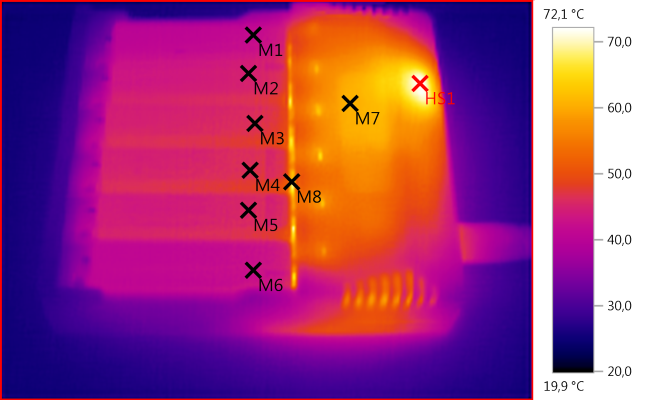
M1: 42,0°C, M2: 45,2°C, M3: 46,4°C, M4: 46,4°C, M5: 45,6°C, M6: 42,6°C, M7: 60,6°C, M8: 66,3°C, HS1: 72,1°C
As usual the charger gets hots, but the batteries is not too hot.

Because the charger is fairly dump I could do a voltage sweep, it shows fairly well how the charge profile works for both NiMH and LiIon cells. The parts where the current is about 0 the led is green, when there is current the led is red.
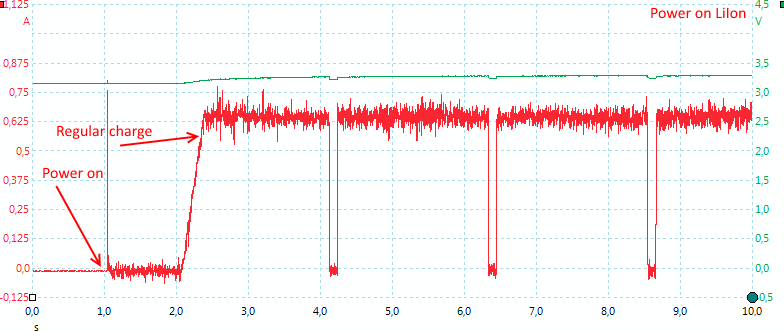
The charger starts immediately and measures the voltage with current off.
Charging NiMH
%20%231.png)
With NiMH the charging current is only about 200mA, this means no -dv/dt detection, but voltage detection.
On this charger voltage detection is at a fairly low voltage and the battery do not get charged anywhere near full.
%20%232.png)
%20%233.png)
%20%234.png)
%20%235.png)
%20%236.png)
The best result was 950mA charged and the worst was 650mA, this is not really useable for a 2000mAh cell.
%20%231.png)
%20%231.png)
%20%231.png)
It is even worse for the high capacity cells, with this charger they have lower capacity than the 2000mAh cells.
%20%231.png)
About 100mAh in a AAA cell, not good.
.png)
With 6 cells it maintains the low charge rate and the low capacity.
.png)
Maximum current from 12V is about 1A.
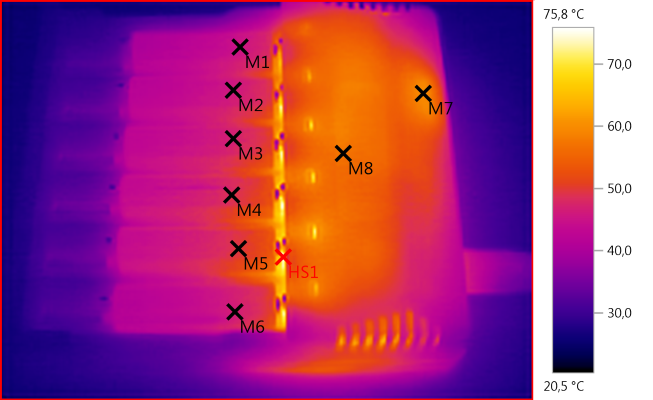
M1: 44,9°C, M2: 46,0°C, M3: 47,1°C, M4: 48,7°C, M5: 49,6°C, M6: 46,6°C, M7: 59,6°C, M8: 57,3°C, HS1: 75,8°C
I would have expected the batteries to stay very cool at this low current, but the charger produces a lot of heat.

The charger starts immediately and measures the voltage with current off.
Testing the charger with 2500 volt and 5000 volt between mains and low volt side, did not show any safety problems.
Conclusion
The charger works fairly well with LiIon cells, but is a bit slow.
The NiMH is not useable, the charger current is very low giving long charge times and it stops very premature on all cells.
Notes
Here is an explanation on how I did the above charge curves: How do I test a charger
Charge selection table



















%20%231.png)
%20%232.png)
%20%233.png)
%20%234.png)
%20%235.png)
%20%236.png)
%20%231.png)
%20%231.png)
%20%231.png)
%20%231.png)
%20%231.png)
.png)
.png)



%20%231.png)
%20%232.png)
%20%233.png)
%20%234.png)
%20%235.png)
%20%236.png)
%20%231.png)
%20%231.png)
%20%231.png)
%20%231.png)
.png)
.png)

